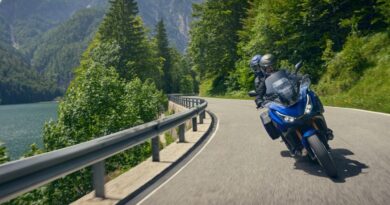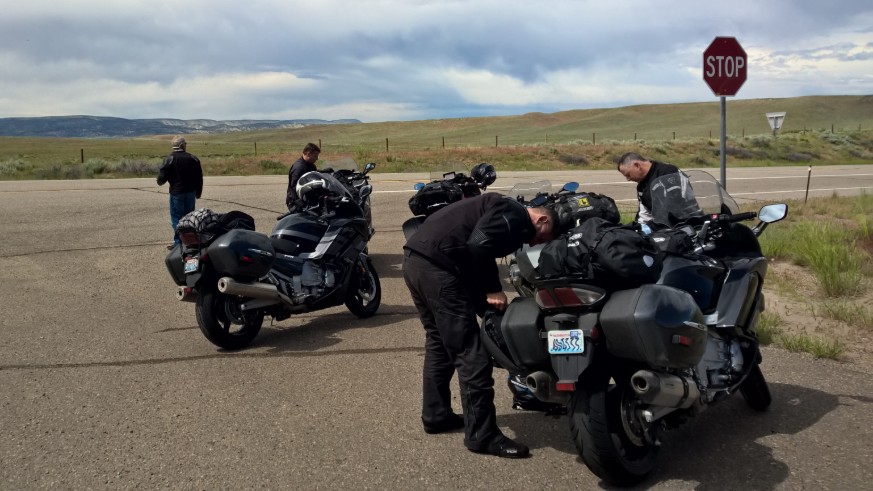
How to Build a Roadside Toolkit for Sport Touring
Carrying the right tools on a sport touring ride is cheap insurance should something go wrong. But choosing the most useful tools can be challenging. After all, you want to be ready for anything – and that leaves a lot of room to imagine a whole chest of necessary tools. As it turns out, and as your own experience likely shows, the tools you really need are quite simple and few in number.
Think of your tools as an emergency roadside repair kit – something to get you out of a jam and back on the road. In it, you should have a few critical replacement parts and supplies along with the tools to fix common problems. Your goal isn’t to make permanent repairs but rather to get moving again and make your way to a qualified shop for lasting fixes.
Modern Reliability Makes Roadside Repairs Rare
Modern motorcycles are engineering wonders characterized by unmatched reliability, long service intervals, and complex interconnected systems managed by computerized Engine Control Units (ECUs). The average rider is unlikely to have the tools or expertise to make roadside repairs to these systems – and, fortunately, will almost never need to.
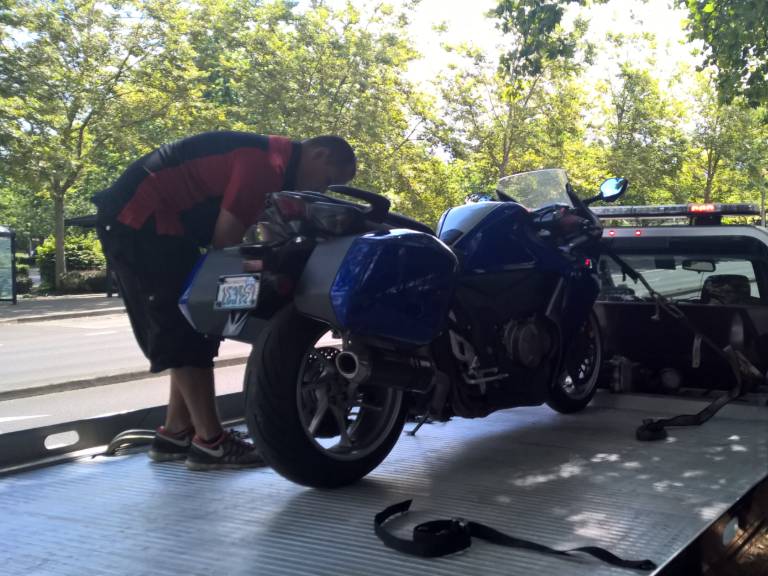
But some repairs are inevitable, and that brings us back to the question: what tools and supplies are important enough to trade valuable luggage space for? The answer lies in recognizing the most common breakdowns sport touring riders will encounter.
What Could Go Wrong on the Road?
To identify the most common problems, we spoke with several motorcycle mechanics at dealerships around the country. Their insights revealed that most breakdowns are caused by external factors rather than internal mechanical failures. For example, kicked up road debris, inevitable rider mistakes, or wear-and-tear on “consumables” like tires, fuses and bulbs.
“The number one problem sport touring riders encounter is a flat tire.” According to Baldwin Sepulveda, Service Manager at Bellevue Motorsports in Washington State.
A flat tire on a desolate road can leave a rider stranded in a vulnerable position. Knowing you have the kit to make a patch and ride to safety does wonders for peace of mind. Read more in the article How to Repair a Motorcycle Flat Tire.
Drops are another occasional source of trouble. Fatigue, distractions, or an over-eager front brake can cause even experienced riders to tip their bikes. The result? Dangling mirrors, cracked fairings, or worse – a snapped clutch or brake lever. Zip ties and duct tape can temporarily patch bodywork, while a wrench and spare lever can handle critical broken parts.

Other potential issues include blown fuses and burnt-out bulbs. Though less common, these scenarios are easy to prepare for. Halogen headlight bulbs have an average life of 500 and 1000 hours, making it a good idea to carry a spare. On the other hand, LEDs will burn bright for over 15,000 hours. Because of that and because they are difficult to replace, the mechanics we spoke with recommend packing a spare halogen headlight, but not to worry about spare LED bulbs.
If your battery is nearing the end of its useful life, in short its old, consider installing a Battery Tender style quick connect cord from the battery in an easily accessible location and carry Battery Tender jumper cables. In the rare instance of a dead battery, the quick connect set-up (along with a vehicle to provide a jump) will get you back on the road with a minimum of effort.
Major breakdowns, such as internal engine failure, broken chains, or locked differentials, are extremely rare. But when they happen, no practical toolkit will help. Sadly, waiting for a tow is the only practical option.
Essential Tools for Every Sport Touring Kit
We’ve logged tens of thousands of miles with riders who dedicate entire side cases to tools they never use. From our experience, the essential tools listed here are all you need to handle the most likely problems:
- Screwdrivers: Carry both a medium-size flathead (1/4 inch tip) and a medium Phillips (#4) screwdriver.
- Wrenches: A 10mm wrench is essential for removing and replacing a broken clutch or brake lever. Check your motorcycle for other common nut and bolt sizes then add more wrenches accordingly. A small adjustable (crescent) wrench adds extra versatility.
- Hex Keys: Most of the fairings and bodywork are attached with hex key (allen head) fasteners (and pop-rivets which we talk about below). Focus on the hex key sizes needed to remove and replace body work.
- Pliers with Wire Cutters: Useful for gripping, bending, or freeing damaged parts, and cutting-loose dangling debris.
- Tire Patch Kit with CO2 Cartridges: Essential for repairing flats on the road. Pack enough CO2 cartridges to reinflate the tire sufficiently to reach a service station. The article How to Repair a Motorcycle Flat Tire has complete details on how to deal with a flat tire.
Spare Parts and Supplies
Beyond tools, pack a handful of small spare parts and supplies that can make a big difference between a long wait and riding on:
- Zip Ties and Duct Tape: The ultimate roadside repair tools. Carry 4 to 6 feet of duct tape and a dozen or so zip ties of varying lengths.
- Fuses: Locate your fuse box and ensure you have spares in the most common amperages for your motorcycle.
- Spare Bulbs: If you run halogen lights, carry a spare headlight bulb and brake light bulb. Spare LED bulbs are unnecessary.
- Pop-Rivets and Fasteners: Losing a screw or rivet during a repair happens frequently. Pack a few extras just in case.
- Spare Levers: It’s worth mentioning the obvious—clutch and brake levers are vulnerable to damage if the bike goes down. However, factory-installed bar ends typically provide some protection. Even when levers are damaged, they can sometimes be bent back into shape. If a lever breaks, the remaining portion is usually still sufficient to operate the control.
- Nitrile or Latex Gloves: Not essential, but they keep your hands clean and pack down small.
Avoid Duplication
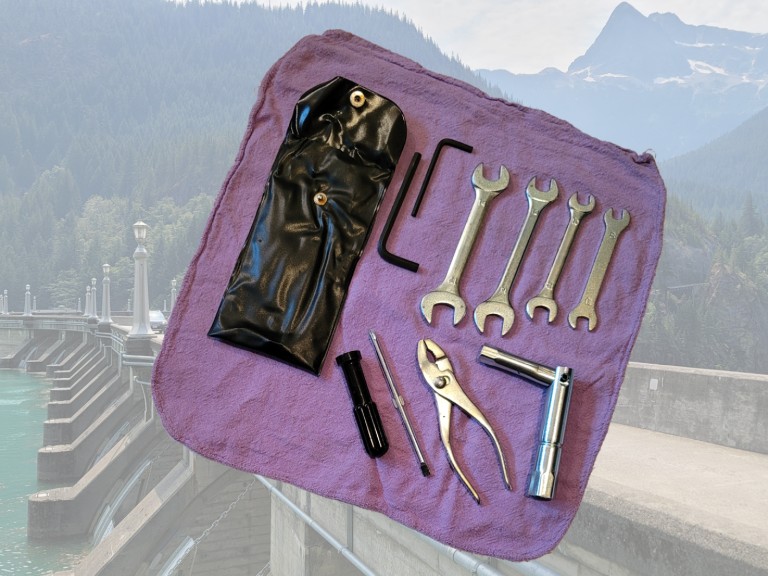
Before adding to your custom toolkit, check what’s already included in the factory toolkit, typically found under the seat. These tools are meant for basic motorcycle service and, while generally not of the highest quality, they get the job done. If quality is a concern, consider upgrading some or all of them with higher-quality versions.
Pack Smart: Use a Tool Roll
Tool rolls provide a convenient and efficient way to organize tools and spare parts. Rolled up, the compact design fits neatly into a side case or tail bag. Unfolded, the tool roll serves as a tidy work surface for keeping track of tools and small parts.
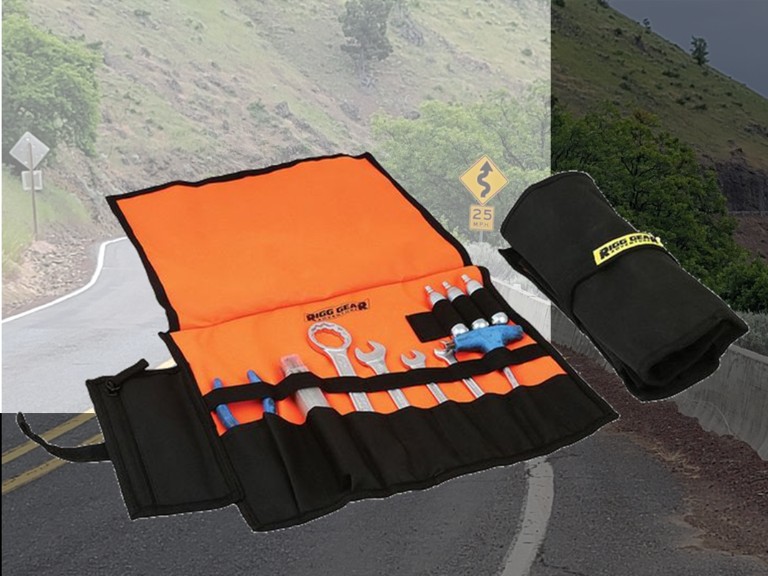
Several options stand out:
- Nelson-Rigg Trails End Small Tool Roll: Under $30 and highly durable.
- Kriega Tool Roll: A premium alternative at just over $45.
Both are sold without tools, so you can customize them with tools and spares that work best with your motorcycle.
Cheap Assurance for Peace of Mind
For under $75, you can assemble a practical toolkit that prepares you for most roadside problems. Before your next ride, take some time to get familiar with the tools in your kit and practice basic tasks—like removing body panels, locating the fuse box, and anything else you might need to handle on the side of the road.
A well-packed toolkit won’t make you invincible, but it will make you resourceful—and that’s often enough to save the day on the open road.
[placeholder text]
Your response is used by American Sport Touring only, we do not store or sell your information.
Please read our Privacy Policy.

by John DeVitis, Editor and Publisher
John DeVitis, Editor & Publisher of American Sport Touring, has spent years riding and writing with a focus on long-distance, performance-oriented motorcycling. His time on the road has revealed little-known routes across the United States and Canada, along with practical insights into the bikes, gear, and techniques that matter to sport touring riders. He draws on this experience, together with a background in digital publishing, to guide the editorial principles and clear vision behind American Sport Touring, delivering content riders can trust.



